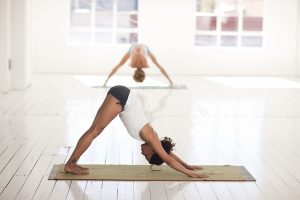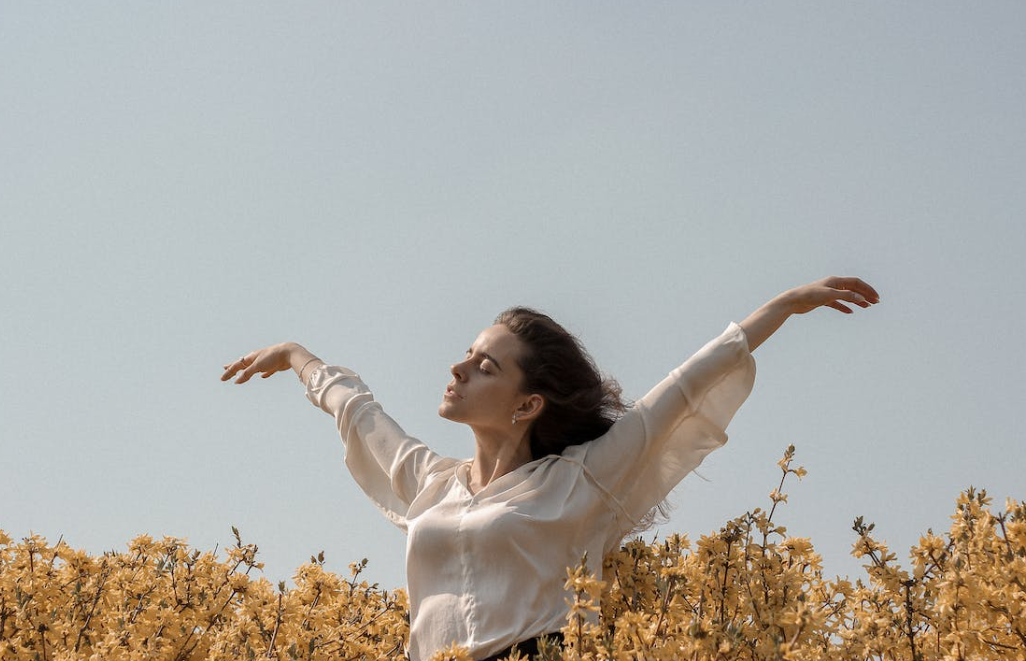Published Date: January 13, 2024
From the fundamental sequence, and the modifications to advantages for health, we’ll show you the information to be aware of about the postures that comprise this flow of yoga.
If TikTok has had any impact it is likely that you have a hefty daily routine filled with teeth scrapers patchy eye brighteners as well as green powders and even skin serums. If you’re trying to maintain a low-stress level throughout the day, boost your mobility, and strengthen your muscles yoga instructors suggest saluting the sun -also than sun salutations.
sun salutations (or Surya Namaskar) is a established sequence of yoga postures which are connected by breathing into an energizing yoga flow, says Rachel Hirsch, yoga instructor and co-founder of Empowered Yoga the yoga studio located in Los Angeles, California.
But what does the sun salutation include precisely? This is your complete guide to incorporate sun salutations to your practice and includes advice from yoga instructors who are certified.
It is the Sequence of Sun Saluatations
The flow was a prayer in motion, during which the participants prayed towards the sun. according to Ashley Galvin who is a yoga instructor who is the founder of Alo Moves. “Traditionally yoga is done early in the morning before breakfast, as dawn approaches.”
In the course of time, however the practice of yoga became more Westernized and popular, this particular sequence has been separated from its religious origins. Today sun salutations are often performed at the beginning in yoga lessons to warm your body or to serve as the first part for the entire class Galvin explains.

Which yoga poses comprise those sun salutation patterns specifically? The sequences vary. There are three sun salutation patterns — denoted as A and C each of which builds upon each other. In general, Sun Salutation A is thought to be the most basic and accessible to beginners, while Sun Salutation C is considered more sophisticated.
The Ahead Chelsea Williams Hofer Ahead, RYT Chelsea Williams Hofer Ahead, a certified yoga instructor and expert in Hyperice, provides a step-by-step guide to moving throughout Sun Salutation A. Also, note that although each pose is detailed below however, they are designed to be interconnected as an encircling flow.
Sun Salutation A
1. Tadasana (Mountain Pose)
A. Place your feet a little away from each other.
B. Let your arms fall down along your torso, palms pointing out and shoulders at ease.
2. Urdhva Hastasana (Upward Salute)
A. Inhale and then sweep your arms upwards in large arches.
B. Place your palms together Then, lower your head and look up towards your fingers.
3. Uttanasana (Standing Forward Bend)
A. Exhale and then release your arms out in front of you as you pivot at your hips and fold them forward.
B. Release your neck to the point that your head is hanging in a slack position from your upper spine.
C. Bend your knees when you notice the pressure on your lower back. Also, support your hands on blocks when they’re not able to touch the floor.
4. Ardha Uttanasana (Half Standing Forward Bend)
A. Inhale, and then push your fingers into the floor (or place them on your shins in case your hamstrings are tight).
tight).
B. Make your elbows straight, then raise your torso’s front away from your legs.
C. The lengthening of the front of your torso while you rotate evenly across the entire length of your spine.
5. Plank Pose
A. Inhale and then take your feet off the top position of the push-up.
B. Adjust your shoulders so that they are directly above your wrists, and your feet are about hip distance away.
C. lower knees until the mat if required.
D. Gaze down and slightly forward while keeping your neck longer.
E. Breathe in and stretch your back.
6. Chaturanga Dandasana (Four-Limbed Staff Pose)
A. Inhale and hold your elbows tightly around your entire body. Flex your elbows while gradually lower entire body to the ground.
B. Continue to lower your arms until your elbows form an angle of right angles Then stop.
C. Eyes down, and slightly towards the forward.
7. Urdhva Mukha Svanasana (Upward-Facing Dog Pose)
A. Inhale while you move forward on your toes and onto the heels of your feet.
B. Press your feet into the mat, make sure you keep your legs strong and loosen your glutes.
C. Take your shoulders back and widen your collarbones.
D. Gaze straight ahead or slightly upwards.
8. Adho Mukha Svanasana (Downward-Facing Dog)
A. Inhale as you raise your hips upwards and then back to make your body take on an upside-down V shape.
B. Apply pressure to your palms and lengthen your back, then let your heels towards
on the mat. If you feel your hamstrings are tight, stretch your knees to the extent necessary.
9. Ardha Uttanasana (Half Standing Forward Bend)
A. Inhale and press your fingers down to the floor (or place them on your shins in case your hamstrings are tight).
tight).
B. Make your elbows straight, then raise your torso’s front away from your legs.
C. Increase the length of the front of your torso while you straighten your spine evenly over the length of your spine.
10. Uttanasana (Standing Forward Bend)
A. Inhale and release your arms while you move your arms forward into a fold.
B. Release your neck to the point that your head is hanging strongly from your upper spine.
11. Urdhva Hastasana (Upward Salute)
A. Inhale and then sweep your arms upwards in large circles.
B. Place your palms together Then, lower your head and look upwards to your fingertips.
12. Tadasana (Mountain Pose)
A. Let your arms fall down along your torso with your palms out and shoulders at ease.
The benefits of Sun Salutations
The advantages of including sun salutations in your daily routine, regardless of whether you’re self-described as a yogi and not many. Here are just some of the physical and mental benefits that come with sun salutations.
Gives you a boost of energy during the morning
Sun salutations have a long tradition of being used to aid people kick-start their day according to Hirsch. “[Theyhelp] stimulate the heart and get the blood flow flowing. This results in warmness in the body which is able to prepare it for more challenging postures and for all the other activities of your day.”
The current practice of “morning movement” draws on the same scientific research. Experts affirm that a surge in heart rate right after you get up boosts hormone levels, reduces stiffness and begins your day off on the right note.
Increases the capacity of the heart
When you move your body from lying down to standing the heart rate will increase. What’s more? The exact same thing occurs during sun salutations, either once or twice according to the particular sequence.
How fast your heart rate increases after performing a sun salutation is dependent on many aspects, including your fitness level at present as well as the temperature in the space, how hydrated you are, the speed at which you’re transitioning between poses, and the length of time you’re spending in sitting positions. In any case, sun salutations can increase your heart rate to the point that you’re aiming for an required 150-minutes of cardio exercise each week.
Strengthens the whole body
Sun salutations are also a great way to improve strength, says Hirsch. Each of the poses within the salutation helps build strength in different areas that make up the entire body. Cobra is a great choice for strengthening the shoulders and chest area as an example, the downward dog is a great way to strengthen your backside.
Improves muscular endurance
It’s not just about building muscular strength through sun salutations however. Also, you build the endurance of your muscles. But the amount of time you can keep each posture in the sequence can vary depending on the style of yoga you’re doing, and also the instructor you are taking the class, according to Hirsch. Some flow types — for example, fast-paced vinyasa sequences are likely to require being in poses for only an hour or so. While slower flowssimilar to those in the hatha yoga will require that you stay in the postures for longer than 10 minutes. However, you’ll improve the endurance of your muscles.
Flexibility increases
Connective tissues, and specifically your muscles become more flexible when they’re pumped full of dense, nutrient-rich blood. Therefore, the blood-pumping sequence that is part of sun salutations can increase flexibility, according to Hofer. “It reduces stiffness, improves flexibility, and enhances mobility and range of motion.”
Encourages greater mobility
Mobility is defined as the strength in your flexibility. You are able to actively move your muscles throughout an array of motionsrather than passively using the assistance of a hands or even your own (which is flexible). As you build strength and flexibility, at the same time as Hofer notes Hofer it is also increasing your mobility.
Reduces stress
When you’ve rolled onto the yoga mat and get your yoga mat out, you’ll are forced to shut off your mind from the outside world and focus on your body and current flow, according to Hirsch. “When postures are challenging mentally and physically, as they are when you do the sun salutation gives you mental clarity and eases tension.”
It is essential to concentrate to accomplish something and your mind must be naturally shifted away from external stressors and forced to focus on the job that is in front of you, she adds. If you are attempting to complete a strenuous sun salutation routine there is no choice but to focus on it. “The stresses of the external world appear to disappear and you are able to focus on the way to progress through the sequence at the moment.”
Enhances the connections between the mind and body
Every pose of the salutation is connected by breath, according to Galvin. “When you deliberately sync your breathing and movements as the sun salutation suggests it will increase the connection between your body and mind.” Outside of the yoga mat, this improved connection may reduce the chances of getting injured, decrease anxiety, boost self-confidence and much more.
Modifications and Variations
Sun salutations don’t have the same level of instruction as those classes at the university level that are 300 levels. There aren’t any requirements to give the sun salutations a go.
“The most beneficial aspect of sun salutations, and yoga generally — is that there’s no pre-requisite knowledge, body type or mental state that you need to have,” says Hirsch. Whatever your fitness or health status you can be capable of performing a variation of sun salutation, she adds.
Every pose in sun salutation could be altered to match a person’s location they are on the particular day. For example, in the downward-facing dog you can modify the pose to a bent knee variation when your hamstrings are tight, or your back is otherwise not in good shape. If you have wrists that are your most restrictive element, you can modify the movement to dolphin posture.
When performing this chaturanga yoga push-up, you may decrease the intensity of the move by dropping down to your knees. You could also raise the intensity of the exercise by performing two yoga push-ups in succession.
Techniques for Breathing
The particular shapes your body takes when you sun salute are important as does your breathing especially as you progress through the motion sequence. If you’re just starting to practice sun salutations and yoga there’s no right or wrong way to breathe, suggests Hirsch.
“There is plenty to learn, and the primary goal should be on achieving a pain-free movement,” she says. “As you move through the process but you will be able to include more details (like breathing) that you could and should be focusing on.”
Generally the sun salutation practice is intended to be performed breath-to movement, Hofer says. Hofer. “The beginning of an exhale starts the transition from one pose to the next one, which is followed by a slowing of the body and breath when you enter the posture. Then, the start of exhale is an indicator to your next move.”
In practice this translates to the lungs’ fullness will determine the pace of your move. When you are able to concentrate on breathing and you’ll begin reaping the many advantages of sun salutationand feel the stress go away from in your body. Hofer says.
“Intentional deep breathing is connected to the parasympathetic nervous systems and when it is activated lowers stress hormones, and can lead to sensations of relaxation” She says.
Practical Tips for beginners
If you’re new to yoga, it’s recommended to start with an easy-going local class. In-person, hands-on and verbal instruction is extremely beneficial for those who are only beginning to master the poses with their body according to Hofer. In addition, an instructor will give you immediate access to tips for scaling that are based on your specific physical strength, mobility, as well as physical limitations, she adds.
Do not be reluctant to let your instructor know about the kind of aches, injuries, or pains you’re experiencing. For instance, if you’re suffering from wrist discomfort Ask your instructor to incorporate wrist-friendly adjustments in their lessons. You should only do what you are able to perform without pain, according to Hirsch. There’s plenty of time to progress into higher-level variants of jobs, she adds.
Common Errors to Avoid
The most common mistake that people make in yoga is attempting to do more poses than their body is able to manage. This can also be avoided by putting your personal ego out of the picture and adopting the approach that is a beginner. Be aware that longevity (not perfect!) is the ultimate target.
For the initial days, Hirsch says that your goal is to create the base of strength and mobility which will allow you to keep building new layers of intensity and to focus on it.
It’s exactly how Maren Morris explains in her book The Bones: When the bones are healthy and healthy, all else is irrelevant. Baby yogis is the time to create strong bones which you can continue to build for many decades to come.








Leave a Reply